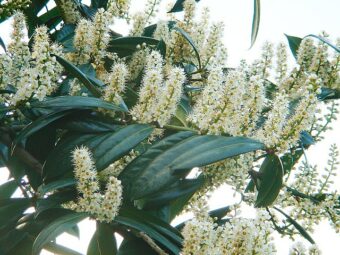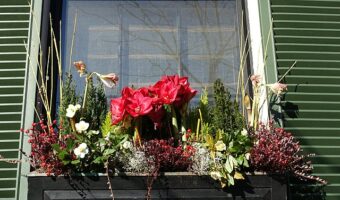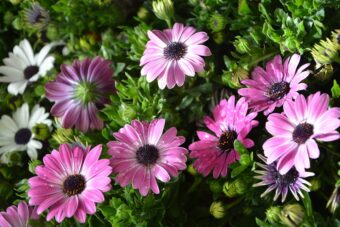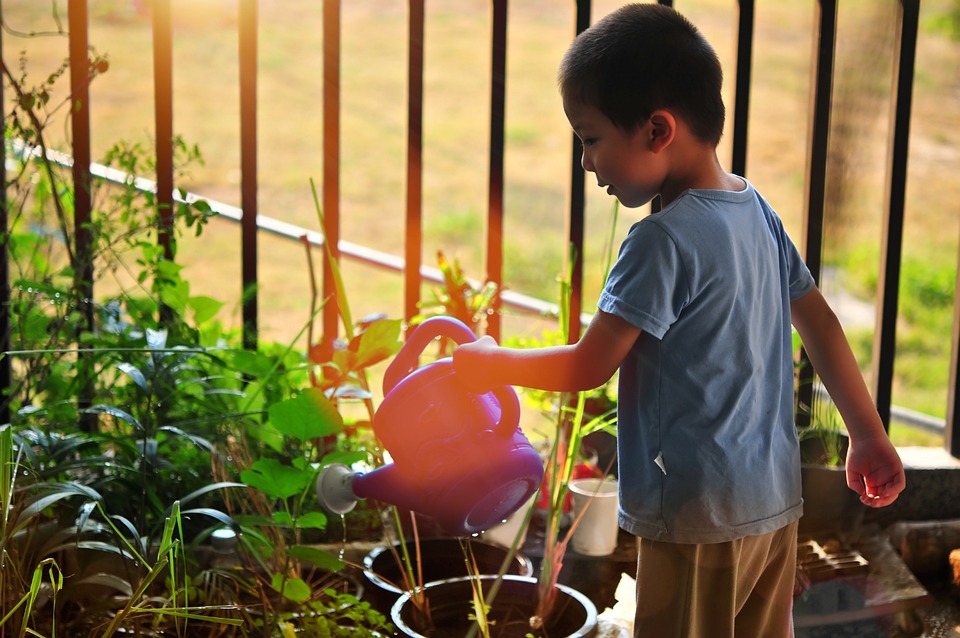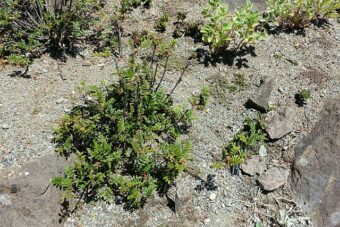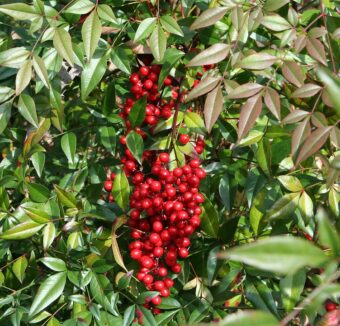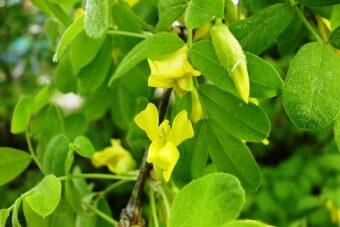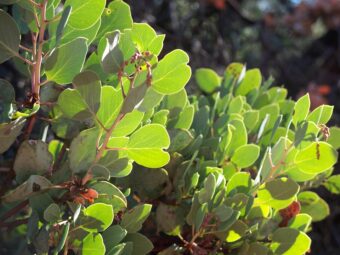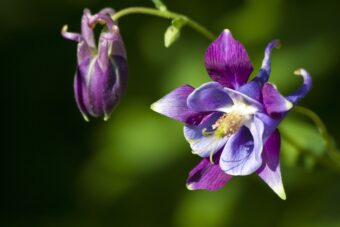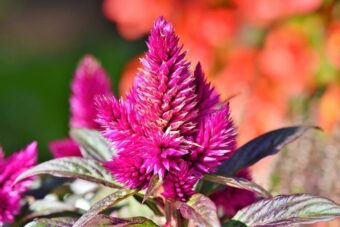In this article, we will discuss how to grow the smaller species of Prunus in Containers. All of us are familiar with the flowering Prunus trees that are commonly called ‘Flowering Cherries’ and the fruit trees of Plums, Cherries, Nectarines, Peaches, Almonds and Apricots. These are often large and unyielding trees, often not suitable to be grown in containers, but they are, however, various shrubby forms that can be grown in containers. They are mainly grown as shrubs that are used in borders and hedges, and those species include Prunus laurocerasus, the common Laurel, and Prunus lusitanica, the Portugal Laurel, …
Category: Getting Started in Container Gardening
In this category of the website posts dealing from container selection, layout and container preparation are discussed in great detail. Compost preparation and compost fertilization are also discussed, along with plant selection methodology. With this information, the basics of container gardening will be explored, and give the reader more confidence in how to start a container garden from scratch.
Creating Window Boxes with Instant Spring Displays
as Spring is now fast approaching rapidly and in this article, we will discover how simple it is to create a stunning spring display in window boxes. In spring, when we are coming out of the dreary, cold winter, we want some instant impact and one of the simplest to do is plant a window box display that will certainly brighten up your day.
By using ready-purchased plants that are coming into flower then it will only take a few minutes to create one that is full of colour under your windowsill.
Containers will satisfy those who tend to impulse …
Creating a Display of Colourful Plants in a Green Window Box
In this article, we discuss how a green painted traditional coloured window box can be used to brighten up any gates. Green tends to recreate the colour of the leaves and is one colour that can be guaranteed to go well with any plant, you wish to use.
You can experiment with different shades from leafy greens, pale yellow-green, bronze-green, silvery sea-green to deep blue-green.
Be imaginative as you do have many plants of different shades and tints of green that you can use.
Team the container with plants whose leaves echo the shades that you have painted the window …
Creating a Child’s Window Box
In this article, we will discuss how to create a simple Child’s window box, which they can create with the help of an adult.
As said previously in an article the secret of making gardening fun for children is to find a way for them to get instant results with very little effort. We all know children like to watch seeds germinate, which is a good way of teaching them patience.
They may want the results yesterday but they can overcome this impulse.
Ideal seeds to use are Nasturtiums, Candytuft, Zinnia, Cosmos, Marigolds, dahlia, and pot marigold. They …
Growing Sorbus Reducta in Containers- Growing the Dwarf Chinese Mountain Ash
In this article, we will be discussing how to grow the only shrub of the Sorbus family in containers. It may seem a bit strange to talk about Sorbus as a shrub, as we generally think about them as popular trees, where many varieties of Mountain Ash, Rowan and Whitebeams are grown. As in any genus, there is one odd man out and that is Sorbus reducta. It is a diminutive shrub that is great as part of a container display in your garden.
Sorbus reducta is a species of flowering shrub that belongs to the Rosaceae (Rose) family. It …
Growing Nandina in Containers-Growing the Small Shrub of Heavenly Bamboo
In this article, we will discuss how to grow the increasingly popular shrub of Nandina domestica in containers. Nandina is the only species of flowering plant that belong to the Berberidaceae (Barberry) family.
It is native to Eastern Africa from the Himalayas to Japan. The reason for its popularity is the colourful foliage it produces, which can be said to be unmatched in the shrub world. In spring new foliage emerges with a tinge of red that turns green as it matures. In autumn, this evergreen shrub will develop a flush of orange, so that it goes from red-tinged to …
Growing Caragana in Containers- Growing the Siberian Pea shrub or Caragana
In this article, we will discuss how to grow the flowering shrub of Caragana in containers. The only species you are likely to find is Caragana arborescens, which is a member of the legume family. It is native to Siberia and parts of China, Mongolia and Kazakhstan. In parts of the USA, it is considered an invasive species.
Caragana is not a popular plant, not because it has a reputation of being a difficult plant, but because the flowers are small and not so numerous. It should be grown more often because it grows naturally in a tough environment and …
Growing Arctostaphylos on Containers- Growing Bearberry or Manzanitas
In this article, we will discuss how to grow Arctostaphylos, an unusual member of the Ericaceae (the Heather) family, in containers. Arctostaphylos comes from the Greek words ‘Arkouda’ meaning ‘Bear’ and ‘Staphula’ meaning ‘Bunch of Grapes’. There are about 60 species of Arctostaphylos where some are prostrate shrubs whilst others are 6m tall trees.
These acid-loving plants make a great alternative to Callunas, Andromedas, Daboecias, Vaccinum and Gaultherias. Most of the species are evergreen (there the only one deciduous species known) and have small, oval, 1 to 2cm long, green leaves that are arranged spiralled around the stems. In early …
Growing Aquilegia in Containers-Growing Columbines or Granny’s Bonnet
In this article, we will discover how to grow the old-fashion but a firm favourite of Aquilegia in containers. As you can imagine this colourful cottage garden favourite makes an ideal plant to grow in containers, where it has the common name of either Granny’s Bonnet or Columbine. In general, they are easy to grow and naturalise as part of a container display.
The nectar-rich flowers are attractive to wildlife and so worth growing. It is a dainty perennial with grey-green ferny-like leaves and on top of these short-spurred flowers appear that come in shades of blue, white, yellow, purple …
Growing Celosia in Containers Outside- Growing Prince of Wales Feathers, Woolflowers or Cockscomb
In this article, we will discover how to grow Celosia in containers. Celosia is a small genus of ornamental and edible plants that belong to the Amaranthaceae (the Amaranth) family. The name comes about from the Greek word ‘Kafsi’ meaning ‘burning’ describing the appearance of the flower heads. The two most commonly seen in the garden are the plume variety, Celosia argentea or Celosia argentea var. cristata, whose crescent-shaped flowers are normally called the Cockscombs.
They are grown for the colourful and vivid flowers for colour indoors or as part of your summer container display. Although it is a tender …

